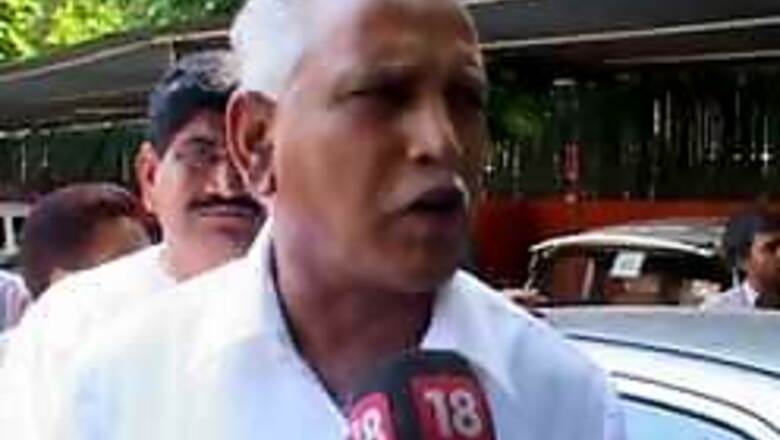
views
The CNN-IBN-Deccan Herald–CSDS survey is one of the largest surveys of its kind that allows us to map the political sociology of voting in the state.
Caste has always been recognised as an important indicator of political choice and preference. In recent years it has emerged as a visible political identity and potent form of assertion of political presence.
Karnataka politics has often revolved around the intricacies of dominant caste politics. Though numerically less than one fourth of the states population, the Lingayat and Vokkaliga community have always accounted for more than half the legislators in the Assembly.
The present pre-poll survey indicates that this old understanding needs to be revised. In a quiet way and perhaps without any clear design, the Congress seems to be rebuilding a coalition of the bottom of the social pyramid and recovering what used to be the social base of the Congress in the earlier era.
Congress gains from below
While the upper social bloc is more or less evenly divided between the three major political players, the lower social bloc is clearly polarised in favour of the Congress. This is what appears to be giving the Congress a clear edge in this electoral race.
The BJP appears to have a sight edge over the Congress in the support it draws from the upper castes across the various political regions of the state.
This is not surprising given the fat that the traditional support base of the party has been from among the Upper Castes including those who have migrated to the state in recent decades.
The dominant peasant communities follow their traditional loyalties, but the regional differences prevent these from voting en-bloc for any party. The Vokkaliga community appears to be evenly divided between the Congress and the Janata Dal(S) with the BJP garnering the support of a little less than twenty per cent of the members of that community.
The majority among the Lingayat community voters appear to favour the BJP. This explains the vote share projected for the party in the Mumbai-Karnataka region.
PAGE_BREAK
The voting pattern among the dominant castes confirms the pattern discerned in the 2004 election, though the BJP vote share among the Lingayat community has witnessed a marginal decline.
Lingayat vote split in Yedyurappa’s home
It is important to note that in the Hyderabad-Karnataka region, the Lingayat community vote appears equally split between the BJP and the Congress. This could account for the Congress appearing to do well in this region.
In the Central Karnataka region (the home of BJP leader Yedyurappa) the support of the Lingayat community appears divided among the three major parties.

In the Southern Karnataka region, a majority from among the Vokkaliga community appear to back the Janata Dal(S). This could have accounted for the BJP being relegated to the third position by the Congress in this region.
On the other hand, in the Bangalore region there is no major difference in the vote share of the Janata Dal (S) and Congress from among the Vokkaligas.
The non-dominant OBC’s have become increasingly politically assertive in the past few decades. Their support appears to once again divided among the three major parties with the Congress having a clear edge.
This could also be in reaction to the support extended to the BJP and the JD(S) by the two dominant castes. The high level of support for the Congress among the non-dominant OBCs in the Hyderabad Karnataka region could be on account of this factor.
The Congress appears to have won the support of the majority of the Dalit voters with the balance being more or less equally divided between the BJP and the JD(S).
No gains for the BSP
As yet the BSP has not made much of a dent in the Dalit vote of Congress. The tribals have a significant presence in select pockets. The delimitation exercise has recognized their presence and the number of seats reserved for tribals has witnessed a sharp increase.
A large chunk of the tribal vote appears to be with the Congress with the balance again being equally split between the BJP and the Janata Dal(S). The tribals have a strong presence in pockets of Hyderabad –Karnataka region and they appear to back the Congress here.
The Muslim voters clearly are with the Congress with a very small percentage supporting the Janata Dal(S) and the BJP. The Janata Dal(S) has clearly lost support within the community on account of its forming the government with the BJP. The greater support for the Congress in the coastal Karnataka region has quite a bit to do with the consolidation of the minority vote.
(Dr Padmavath is the Karnataka coordinator of the survey and a senior social science faculty at the International Academy for Creative Teaching, Bangalore. Dr Veena Devi is the Karnataka supervisor for the survey and reader in political science, Bangalore University)
















Comments
0 comment